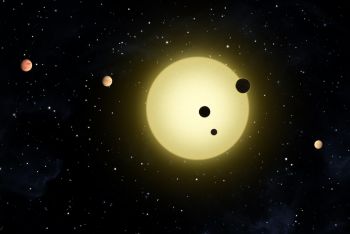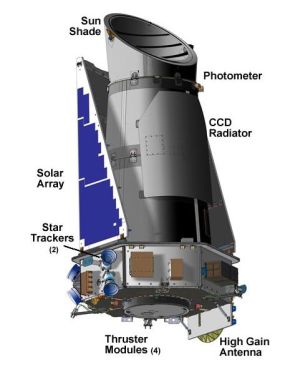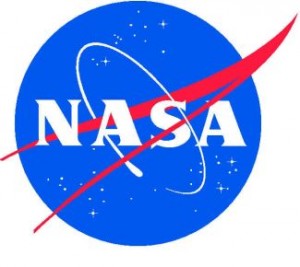NASA’s Kepler Space Telescope Finds 41 New Planets
By Space Coast Daily // June 23, 2013
Kepler launched from the Cape In 2009
BREVARD COUNTY • CAPE CANAVERAL, FLORIDA – To say that astronomers are thrilled with the findings of NASA’s Kepler Space Telescope would be an understatement.

Since the launch of Kepler from Cape Canaveral Air Force Station in March 2009 aboard a Delta II rocket, all Kepler has done is to detect thousands of alien world candidates, including the addition of 41 new confirmed planets.
NASA confirmed that several studies have verified that Kepler has found 41 new transiting planets in 20 different star systems.
What’s startling about this announcement is that prior to this point, the discovery of new planets has been made one or two at a time – not 41 all at once.
About 19 of the new-found planetary systems have two closely space transiting planets and another new system has three.
TRANSIT TIMING VARIATION
NASA said these Kepler-discovered planet sizes run from Earth-sized to those of a diameter seven times that of our own planet. Many are in orbit so close to parent stars that they are totally uninhabitable worlds.

Kepler found these new planets using Transit Timing Variation, measuring gravitational pull and accompanying acceleration of orbit in star systems. The method finds dips in a star’s brightness caused by a planet crossing in front of it.
“These systems, with their large gravitational interactions, give us important clues about how planetary systems form and evolve,” said lead researcher Jason Steffen, the Brinson postdoctoral fellow at Fermilab Center for Particle Astrophysics in Batavia, Ill. “This information helps us understand how our own solar system fits into the population of all planetary systems.”
Steffren said two research teams used data from NASA’s Kepler space telescope to locate all of the 41 new planets.

“The sheer volume of planet candidates being identified by Kepler is inspiring teams to look at the planet confirmation and characterization process differently. This TTV confirmation technique can be applied to large numbers of systems relatively quickly and with little or no follow-up observations from the ground,” said Natalie Batalha, Kepler mission scientist at NASA’s Ames Research Center in California.
“Perhaps the bottleneck between identifying planet candidates and confirming them just got a little wider.”
116 CONFIRMED PLANET DISCOVERIES
 Kepler had been credited with finding some 2,300 planetary candidates. Some 75 of these have been verified, so the addition of 41 new worlds brings Kepler’s total confirmed planet discoveries to 116.
Kepler had been credited with finding some 2,300 planetary candidates. Some 75 of these have been verified, so the addition of 41 new worlds brings Kepler’s total confirmed planet discoveries to 116.
NASA extended Kepler’s original three-year mission of surveying a portion of our region of the Milky Way galaxy main mission is to find Earth-size planets in the so-called habitable zones of parent stars to 2016.












